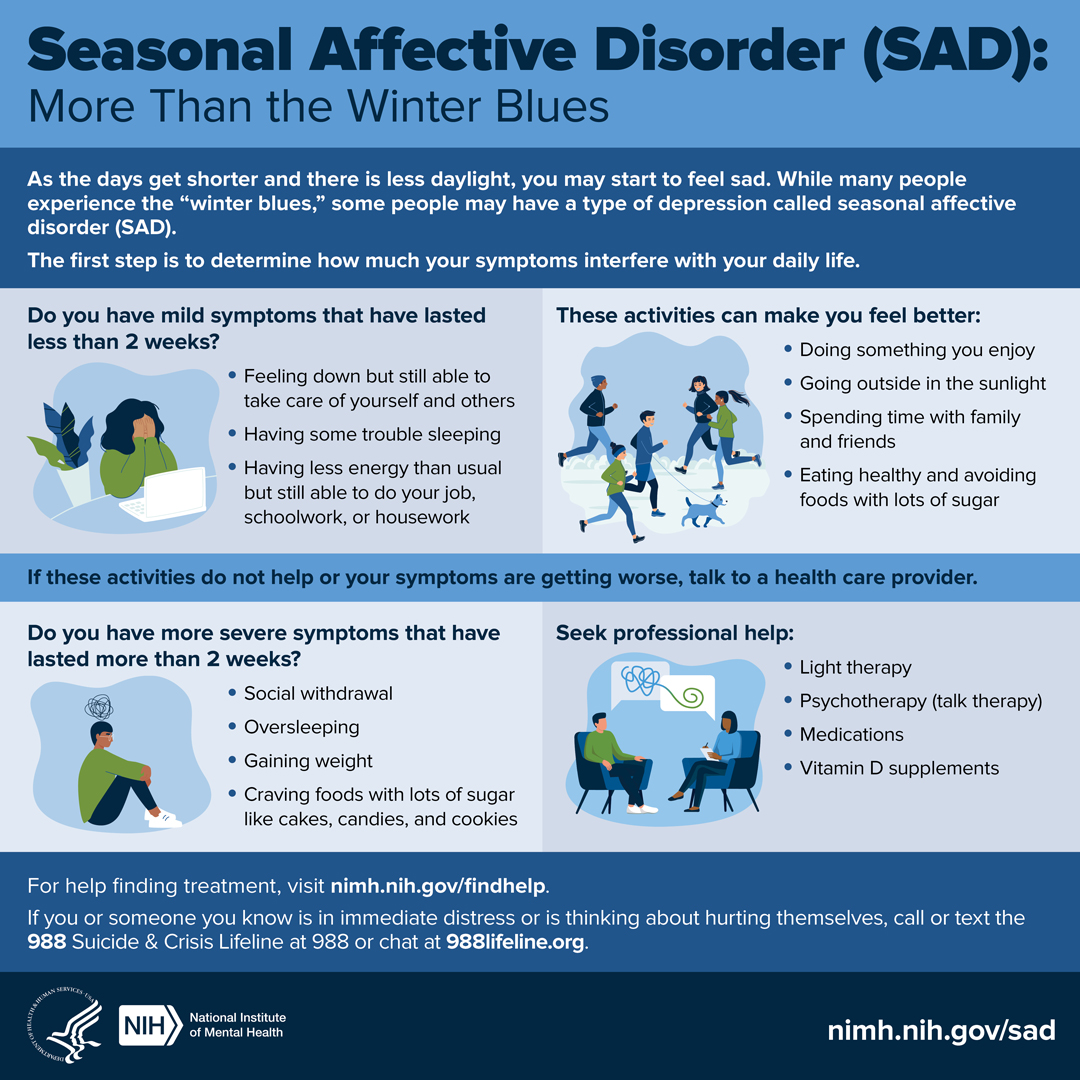Seasonal Affective Disorder
Is it just the 'winter blues' or seasonal affective disorder (SAD)? This infographic may help guide you on when to seek professional help. https://go.usa.gov/xeqyS #shareNIMH

An official website of the United States government
Here’s how you know
Official websites use .gov
A .gov website belongs to an official government organization in the United States.
Secure .gov websites use HTTPS
A lock ( ) or https:// means you’ve safely connected to the .gov website. Share sensitive information only on official, secure websites.
Due to current HHS and NIH restructuring, some content on nimh.nih.gov is not being updated regularly. Please refer to nih.gov.
Transforming the understanding
and treatment of mental illnesses.
Menu
As the days get shorter and there is less daylight, you may start to feel sad. While many people experience the “winter blues,” some people may have a type of depression called seasonal affective disorder (SAD).
The first step is to determine how much your symptoms interfere with your daily life.
If these activities do not help or your symptoms are getting worse, talk to a health care provider.
For help finding treatment, visit NIMH’s Help for Mental Illnesses webpage.
If you or someone you know is in immediate distress or is thinking about hurting themselves, call or text the 988 Suicide & Crisis Lifeline at 988 or chat at 988lifeline.org .
U.S. DEPARTMENT OF HEALTH AND HUMAN SERVICES
National Institutes of Health
NIMH Identification No. OM 22-4320

Is it just the 'winter blues' or seasonal affective disorder (SAD)? This infographic may help guide you on when to seek professional help. https://go.usa.gov/xeqyS #shareNIMH
Find more resources to share on social media.
The information in this publication is in the public domain and may be reused or copied without permission. However, you may not reuse or copy images. Please cite the National Institute of Mental Health as the source. Read our copyright policy to learn more about our guidelines for reusing NIMH content.